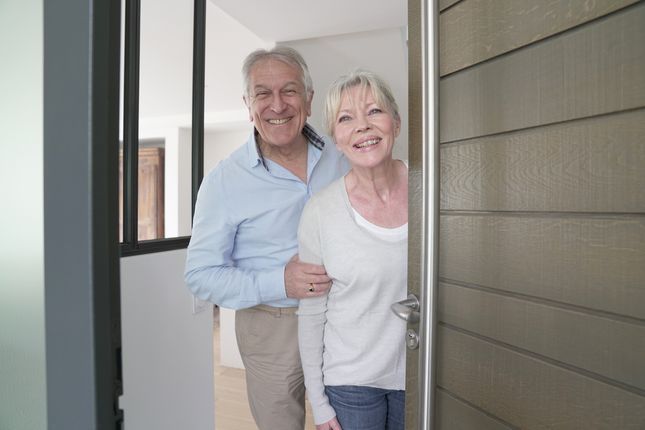First home buyers will have an additional reason for celebration when the clock ticks past midnight on New Year’s Eve.
This is because, from 1 January 2020, these buyers will be eligible for a Federal Government scheme which will allow them to purchase a home with a deposit of as little as 5 per cent.
As part of the First Home Deposit Scheme, the home loans of up to 10,000 first home buyers will be guaranteed - allowing them to buy a property even if they have a small deposit.
While first home buyers may have a special reason to celebrate the new year, many older Australians will be entering 2020 with a far gloomier perspective.
A significant jump in elderly renters, along with more people entering retirement with unsustainably large mortgages, means it is time for the government to turn its attention from first home buyers...to ‘last home buyers’.
Alarming increase in senior renters
Home ownership is considered as one of the pillars of Australia’s retirement income system.
In recent years, however, there has been an alarming increase in the number of Australians entering retirement as renters, and therefore with less ability to fund their retirement.
A report by the Australian Housing and Urban Research Institute (AHURI) in August found that the percentage of Australians who are renting and aged 55-64 is expected to jump from 14 per cent in 2016 to 18 per cent in 2031.
This means there will be 566,693 private renters in this age group across the country in 2031 (an increase of around 200,000 compared to 2016).
Typically, these renters will have no or little protection against evictions or rent increases, won't be able to draw retirement funding from downsizing or a reverse mortgage, and will most likely face higher housing costs due to their weekly rent.
In addition, more Australians than ever before are moving into retirement at risk of falling out of home ownership, because of large mortgages.
The percentage of Australians aged 55-64 with a mortgage has doubled from 17.6 per cent in 2011 to 35.8 per cent in 2016.
Research in 2012 found that high mortgage debt was a key reason for olders Australians to become renters. In fact, during the first decade of the new millennium, nearly half a million Australians aged 50 years and over terminated their home ownership and moved into the rental sector.
Need for a ‘last home owner’ scheme
Given this, it’s now time to turn the Australian Government’s policy radar from first home buyers to the nation’s seniors.
The focus should be on ensuring people aged in their 50s or 60s can be transitioned into home ownership, or even just some level of home equity, before they hit retirement age. In other words, a ‘last home owner’ scheme.
Clever solutions are needed, which don’t rely on the traditional long-term mortgage used by first home buyers, but are instead tailored to the financial situation of seniors.
The government, for instance, could examine some of the good work done in the United Kingdom supporting shared equity and ownership models.
This includes the UK’s Older People’s Shared Ownership scheme, which is backed by the government and allows over 55s to buy a 25-74 per cent share of a home, and then pay rent on the remaining share. Once the home owner achieved 75 per cent ownership, no rent is payable on the final 25 per cent share.
During 2019, Australian Affordable Housing Securities CEO Samantha Evans completed a four week Churchill Fellowship program travelling to San Francisco, Boston, Washington D.C and London meeting shared equity experts in the USA and the UK.
In her report, Ms Evans recommends that the Australian Housing Minister Michael Sukkar develops a policy response to the creation of a shared equity asset class, underpinned by government.
This view is backed by a separate AHURI report, published in August, which found that: “Delivering low cost, low deposit ownership products, for example through shared ownership or through a land rent type scheme could deliver the safety, security and control characteristics of home ownership sought by older Australians.”
“Servicing ten-year mortgages would be viable for those in the younger age categories in secure employment (around 55) and would deliver that security into retirement.”
The report that 13 per cent of Australians aged 55-64 were likely to access shared ownership products delivered through government, while 29.7 per cent were interested in low deposit home loans.
Smarter use of Commonwealth rental payments
In addition, major consultancy firm KPMG has completed some impressive work detailing how the Australian Government’s Commonwealth Rent Assistance (CRA) scheme could be used by vulnerable seniors to build a home equity stake.
KPMG has recommended that the government increase the maximum rate of the CRA, then change the rules to allow pensioners who receive the CRA to “build an equity stake in their home as a means of building up their assets and financial security”.
There’s no shortage of information and ideas about how to help seniors - but what is missing is the political will and action.
PS - One of the few operators to offer a shared ownership option is Hampshire Villages, which allows incoming buyers to purchase part of their new land lease community dwelling (on average 65 per cent) with the company owning the rest. Fees do apply.


